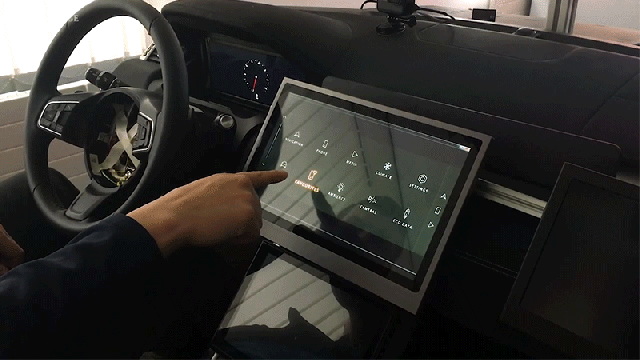Initially developed to make it easier to interact with touchscreens in cars to reduce distractions, researchers at the University of Cambridge have created a touchscreen interface that users don’t actually have to physically tap, and it’s perfectly timed for a post-pandemic world where we’re all going to be too paranoid to touch anything outside our homes.
Touchscreens found their way into our vehicles many years ago, starting with aftermarket GPS navigation devices suction cupped to the windshield and fancy aftermarket stereo upgrades with retractable screens. In recent years, thanks to company’s like Tesla, touchscreens have started to replace knobs and dials. It allows for more of a vehicle’s controls to be accessible in one place, but unlike physical knobs and dials that can be operated without a driver taking their eyes off the road, touchscreens require them to momentarily look over at the screen.
Further complicating the implementation of touchscreens in a car is that it’s often difficult to accurately tap an item, due to the angle of the screen, or a bump in the road that shakes the vehicle, which then requires additional navigation to cancel a selection or jump back in a menu. But touchscreens in cars aren’t going away — buttons and dials just feel old-fashioned now — which is what prompted this new approach.
Working with Jaguar Land Rover, the University of Cambridge researchers developed a technology they call “predictive touch” that relies on a host of information to determine what a user intends to tap on a touchscreen before their finger actually makes contact with it. That includes a gesture tracker that can either take advantage of small cameras or RF-based sensors to determine the position and trajectory of a user’s hand and fingers, but also more contextual information such as what app they’re currently using (music playback versus a map) or the current environmental conditions (if it’s hot they may make more adjustments to the air conditioning). The technology can even take advantage of other sensors in the car, such as eye-gaze trackers, to improve the accuracy of a predicted touch based on where the driver’s actually looking.
In tests conducted in controlled environments facilitated by driving simulators, as well as real-world in-car trials, the researchers found that predictive touch reduced the amount of time a driver was interacting with a touchscreen interface by as much as 50%. But the technology has other practical uses too. It could be implemented in smartphones, making it easier to accurately send texts and messages while your device is bouncing around as you walk. And anyone who’s ever cringed at having to touch a screen on an ATM, or an airport check-in terminal, that thousands of other people have already touched, predictive touch could dramatically reduce, if not completely eliminate, the spread of bacteria and viruses there. By the time it’s implemented on a large scale we’ll (hopefully) have an effective vaccine against covid-19, but colds and flus still make regular appearances.
